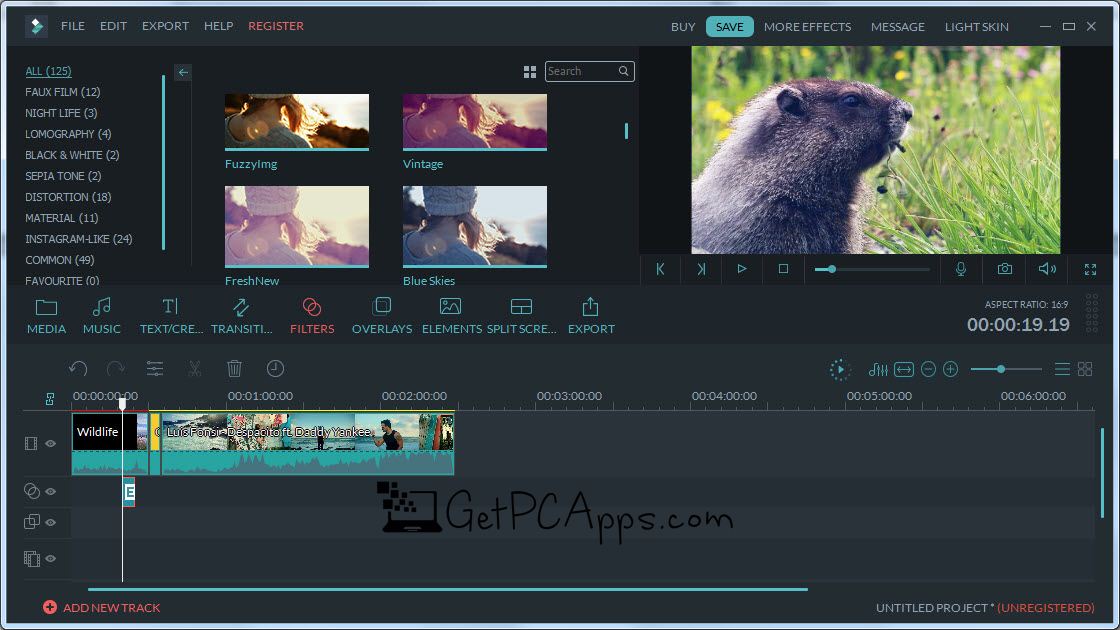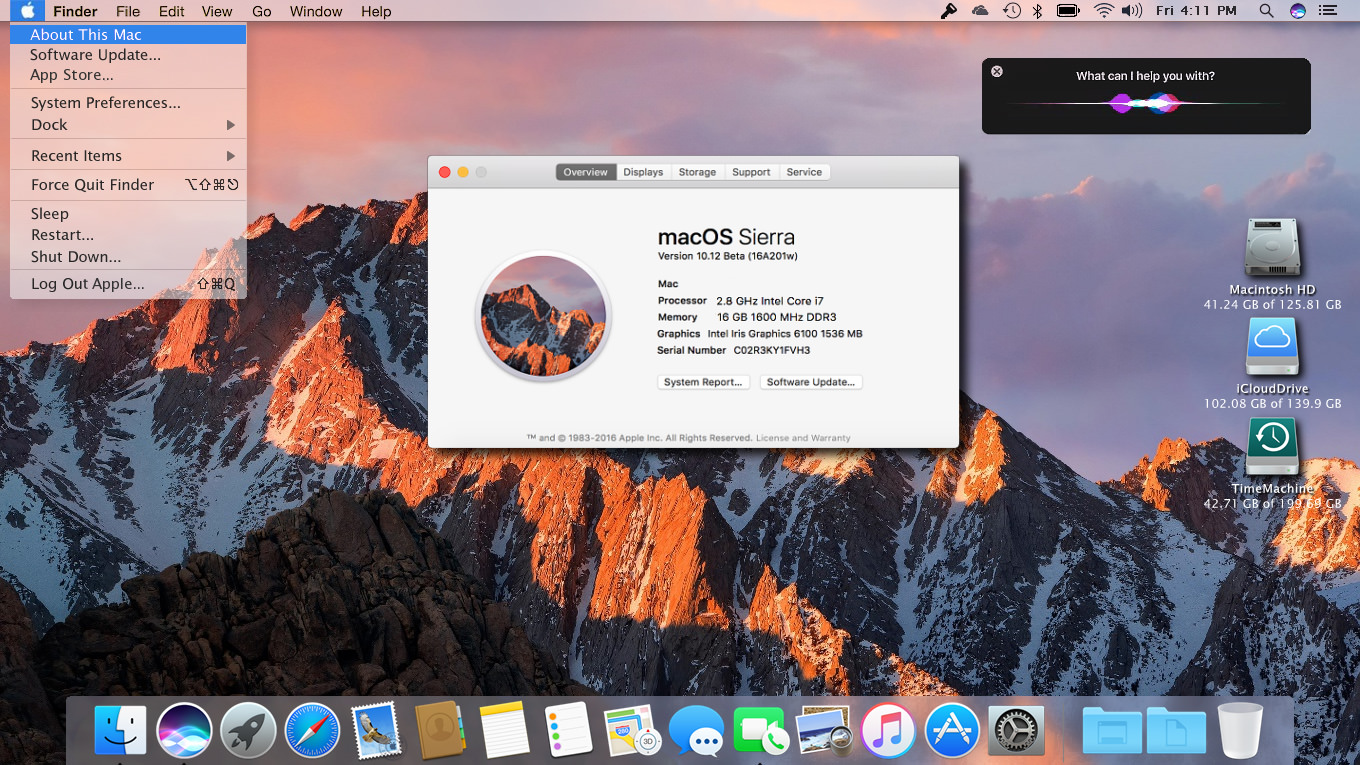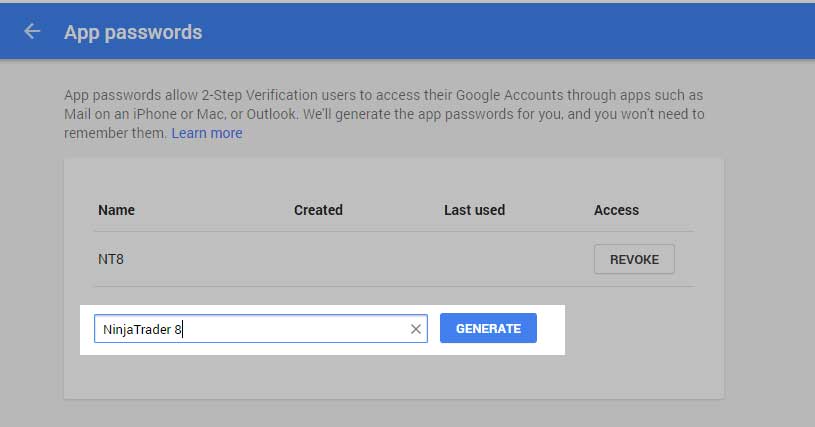One-click commit, push and pull. Unique search in history and undo for Git commands.
Powerful commands like rebase, branch reset and cherry picking.
And now it works with submodules.
- Is There A Program Like Ninja Trader For Mac Osx
- Is There A Program Like Ninja Trader For Mac Osx Download
- Is There A Program Like Ninja Trader For Mac Osx Os
Paintbrush is a simple paint program for Mac OS X, reminiscent of Microsoft Paint and Apple’s own now-defunct MacPaint. It provides users with a means to make simple images quickly, something which has been noticeably absent from the Mac for years. Logitech k120 keyboard program for mac. There is no version that was designed for a mac as NinjaTrader runs on the.net framework which basically means it was coded for a PC running Microsoft Windows. If you want to get NinjaTrader 8 to work on your mac, you will need to follow the steps outlined below.
$14.99
Pay with credit card
Pay with Bitcoin
- There are a few reasons why you might want to download and install old versions of macOS or Mac OS X. Perhaps you are relying on software you have discovered doesn't work properly in the newest.
- Unfortunately, NinjaTrader for Mac is not yet available. Anyway, there are plenty of similar trading and stock market monitoring and analyzing tools out there, so if you were looking for NinjaTrader for Mac, you can try these ones instead.
AlternativeTo is a free service that helps you find better alternatives to the products you love and hate. The site is made by Ola and Markus in Sweden, with a lot of help from our friends and colleagues in Italy, Finland, USA, Colombia, Philippines, France and contributors from all over the world.

Gitbox integrates with popular diff tools such as Xcode FileMerge, Kaleidoscope, Changes, DiffMerge.
Use keyboard for ultimate efficiency. Use arrow keys to jump between all the panes and lists.
To stage all files, hit Cmd+Shift+Return. To stage/unstage selected files, use 'S' shortcut.
To pull and push, use 'U' and 'P' shortcuts. Press Option key to perform fetch. Press Cmd+Shift to force push or rebase.
Right click menus contain all the advanced features you might need. For instance, to reset a branch, cherry pick a commit or revert a file.
To amend a commit, simply undo it (cmd+Z). You can also undo merge, pull and even push.
To find a bug, use color labels. Check out a commit, test it and mark if it works or not. This is a much better and visual approach than git-bisect.
“Version control outside the Terminal is usually a clusterfuck. Gitbox looks the most straightforward that I've seen thus far.”
Mark Otto, UI designer at Twitter.
“I’ve started really, really liking Git since getting Gitbox. Nice, clean, simple, works.”

Wil Shipley, Cocoa Legend.
“Finally a glorious Mac app for managing Git repositories. Thank the lord!”
Brennan Novak, designer, musician, developer.
“[Gitbox isEqualTo:Awesome];”
Calvin W. Stephens IV, software developer and designer.
Requirements
Mac with 64-bit processor.
OS X Lion or Snow Leopard.
For Snow Leopard users: libcurl 7.0.0 or later (must be in /usr/lib).
1. Install the latest Xcode from App Store.
2. In Xcode Preferences: download and install Command Line Tools.
3. In Terminal: sudo /usr/bin/xcode-select -switch /Applications/Xcode.app/Contents/Developer
How to buy
Gitbox is offered on both Mac App Store and with an old-school license. Both builds are the same and distributed on the same conditions: the license is for personal use, on any number of machines. Updates are free.
Students are offered 50% discount coupon (a scan of student ID required).
There is a discount for volume purchases. Drop us a line for details.
Support
Ask a question by email oleganza@gmail.com or using twitter @gitboxapp.
Gitbox is designed by Oleg Andreev, a software designer from Paris, France.
In the past two articles you have seen how to customize your Java application so that it looks and feels more like a native Macintosh application when running on Mac OS X without changing the end user experience on other platforms. A combination of runtime properties and coding changes that targeted Mac OS X specific APIs made a big difference to that audience.


Recall that Mac OS X is a melding of two worlds. Hard core UNIX programmers can pop open a Terminal window and write their Java code using vi and compile and run it from the command line. There is, however, the more traditional Mac audience that interacts with their computer through a friendly UI that follows Apple Human Interface guidelines.
In this article, we look at deploying your Java application. The technical geek audience might be happy with running a class with a main() method from the command line but the wider audience expects a double-clickable icon that looks and acts like every other native application. In this article, we travel from one end of the spectrum to the other to broaden your potential user base.
Although you should 'test everywhere', your build machine may not be a Mac. Fortunately, as you will see, a double-clickable Macintosh application is just a directory with some special contents and a name that ends with .app. Even on a Windows machine you should be able to modify your build script to package up a Mac-specific version of your application.
Primitive Distributions
Because Mac OS X ships with J2SE 1.4.1 and J2SE 1.3.1, you can distribute your application as class files or jar files and - in theory - your customer could run your application from the Terminal application. We start with these models and quickly move to double-clickable jar files and shell scripts.
For this article, use the Java Sound Demo as the running example. Download and unzip the zip file. Inside the JavaSoundDemo directory you will find the source files inside of the src subdirectory, a jar file, audio files, and html files that we will not use.
Raw Class Files
As a developer, you don't think twice about compiling the source files and running the application using the command line. Compiling the eight files in the src directory generates fifty class files. You can then run the sample application from the command line like this.
java JavaSound
The Java Sound Demo starts up. We haven't customized the application in any way so the menu appears at the top of the JFrame and not where Macintosh users expect. The application looks like this out of the box.
You have done this compile and run step so many times that you hardly think twice about it. Think of the least technical person you know and ask whether they would be likely to follow these steps to run your application if a competing application were easier to install and run.
This example demonstrates two separate areas of usability. Once we got the application up and running it looked good and ran fine. You would not, however, want to distribute an application to an end user this way. You would have to somehow bundle up the fifty class files for easy download and installation. You would then have to provide instructions for running the application using, in the case of Mac OS X, the Terminal application.
Jar Files
If you are going to have to package up the class files for distribution anyways, you may as well produce a jar file. And, if you are going to produce a jar file, it ought to be executable. In the case of the Java Sound Demo, the file JavaSoundDemo.jar is executable. Because Mac OS X ships with the Jar Launcher application, the end user needs only double click on the jar file and the application will launch.
To make the jar file executable, the manifest must include the name of the Main class file. Unjar JavaSoundDemo.jar with the command jar xvj JavaSoundDemo.jar. Here's the file META-INF/MANIFEST.MF.
Shell Scripts and Helper Applications
For larger or more complicated applications you are likely to have more than one jar file along with resource files. A common strategy for targeting multiple platforms is to include a batch file and a shell script. Choose the non-platform specific download from the NetBeans homepage. Inside of the bin subdirectory you will find applications for running NetBeans on a variety of platforms.
The shell script runide.sh can be run from the command line like this.
sh runide.sh -jdkhome /Library/Java/Home
The NetBeans IDE starts up with this decidedly non-Mac OS X look and feel.
You could, of course, modify the shell script to modify this look and feel, but the NetBeans developers decided on a different approach. Even though the typical NetBeans audience member is technically competent, there should be a friendlier way to start the IDE. They have created a native Mac OS X application called NetBeansLauncher.
The version of NetBeansLauncher that is included in the generic NetBeans download is a good next step. You will see how the team took it farther in the next section. On a Mac OS X computer you can double click on the macosx_launcher.dmg file inside of the bin directory. This is a disk image. Drag the NetBeansLauncher from the expanded disk image back into the bin directory. Now double click on the NetBeansLauncher. The ReadMe file that was also in the disk image provides the following information about usage.
When launched for the first time, NetBeansLauncher needs to find NetBeans root directory. First it looks into NetBeansLauncher.app itself. If it does not find NetBeans root directory there user must specify NetBeans root directory manually.
For this download, the first time the user starts up the NetBeansLauncher, they need to navigate to the netbeans directory. After that, double clicking on the NetBeansLauncher starts up the NetBeans IDE as if it were any other native Mac OS X application.
First Class Mac OS X Applications
If you download the Mac OS X disk image from the NetBeans distribution and mount it you may be surprised at the simplicity of what you find. Unlike the complex structure visible in the other distributions, you will see five files with documentation and a single application. To install, you can move this NetBeansLauncher application anywhere on your hard drive. Double click on it and the NetBeans IDE starts right up.
This is the experience that is expected on Mac OS X. The package structure and complexity is hidden from the user and they can't accidentally move a file that renders the IDE unusable. In this section we'll look more closely at the package structure and how to create a Mac OS X application whether or not our build machine is a Mac.
Packages in Mac OS X
Is There A Program Like Ninja Trader For Mac Osx
Consider again the sentence from the NetBeansLauncher instructions that says in order to locate the NetBeans root directory, 'First it looks into NetBeansLauncher.app itself.' This implies that NetBeansLauncher is a directory with the name 'NetBeansLauncher.app'. In the mounted disk image, either right click or Ctrl-click on the NetBeansLauncher icon and choose to 'Show Package Contents'.
The structure is the same for all Mac OS X applications. There is a Contents directory with an XML file named info.plist, a text file named PkgInfo, a MacOS directory, and a Resources directory. If you don't have a creator code registered with Apple the PkgInfo text file should contain only the following.
If you have a creator code, use it in place of the question marks. Ordinarily the MacOS folder contains a small stub file that launches the Java VM. In this case the NetBeans team has written their own application. We will look more closely at a property list file in the next section. For now, take a look at the contents of the Resources directory.
You can see the contents of the same netbeans package inside of the Resources subdirectory. This is your key to deploying on Mac OS X. Add in the necessary pieces and then just bundle up your ordinary distribution in the appropriate location. If you have a more flexible build process you should also strip out those pieces that aren't needed for the Mac OS X application such as the Windows executables.
If you are interested in digging deeper into the structure of a Mac OS X application, you will find more information in the Apple publication Anatomy of a Bundle.
Creating 'Native' Java Applications on Mac OS X
If you develop on Mac OS X you can use the Jar Bundler application to turn jar files into Mac OS X applications. Jar Bundler is distributed with the other developer tools and is located in Developer/Applications/. Start it, select the 'Classpath and Files' tab and add the file JavaSoundDemo.jar.
Is There A Program Like Ninja Trader For Mac Osx Download
Select the 'Build Information' tab. For 'Main Class', navigate to the JavaSoundDemo.jar file again and select JavaSound from the drop down list. This list is populated by any classes in the jar file containing a main() method. Accept all of the default settings for the options. You can use the default Java application icon or you can create your own. The icon you see below started as a screen shot of the running Java Sound Demo and was transformed into an icon using the IconComposer application that is also distributed as part of the developer tools.
Press 'Create Application' and enter the name 'JavaSoundDemo'. A Mac OS X application is created for you. You can show the package contents of the generated application as before. You can view the property list with Apple's Property List Editor or with any text editor. It is just an XML file with properties stored as name - value pairs.
The Java properties indicate the location of the jar file, the name of the Main class, and the version of the JRE to be used. The other properties include a pointer to the icon file and to the Java application stub file that is the native executable.
Creating Mac OS X Java Applications on Other Platforms
Take a look at the contents of the package that was generated by Jar Bundler on Mac OS X.
On another platform you need to duplicate this structure. To create an application named 'JavaSoundDemo' on, say, a Windows machine, start by creating a directory and naming it JavaSoundDemo.app. Next, create a subdirectory named Contents. Inside of Contents you will need a MacOS directory with the JavaAPplicationStub. You can create the PkgInfo text file and your Info.plist can also be generated by hand and should contain the following XML.
You will need a Resources directory with a Java subdirectory into which you put the JavaSoundDemo.jar file. In other words, with the exception of the JavaApplicationStub and the music.icns file, everything else can be created on another platform.
If you use Ant you can easily add a target that takes your jar files, images, and other resources and bundles it up as a Mac OS X application bundle that includes the plist file and Java application stub in the appropriate locations. Every time you create a new build you will automatically have your Mac OS X version. You can also find a growing number of Ant tasks that automate some of the steps outlined in this article.
Summary

Is There A Program Like Ninja Trader For Mac Osx Os
When it comes time to deploy your Java application, consider the ease of use of your target audience. Even developers appreciate the double clickable version of the NetBeans IDE. Creating a Java application that looks and feels like a native application does not require a lot of extra work and can easily be integrated into your build process even if your build machine runs a different operating system.
For More Information
